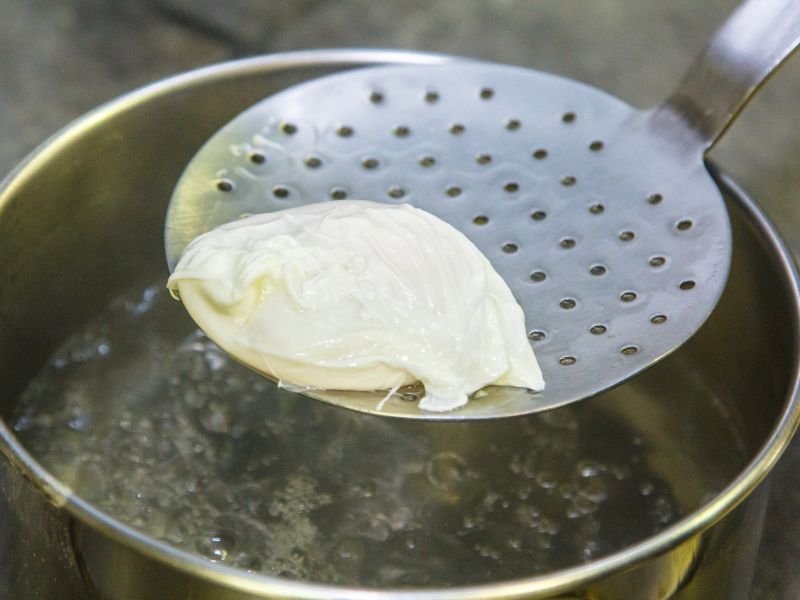
Everything you need to know about poached eggs
Poached eggs are a delicious and versatile addition to any meal and my favourite way of enjoying an egg for breakfast.
Whether you're looking to make Eggs Benedict, Turkish Eggs or just want a protein boost, poached eggs are a great choice. I love cutting into them and having the delicious egg yolk run out.
However, poaching an egg can be a bit intimidating for some people, as it requires some finesse and precision.
In this blog post, I will walk you through how to poach an egg, step-by-step, so you can get it right every time.

Step by step to the perfectly poached egg
Step 1: Choose the right egg
First things first, you'll want to choose the right egg for poaching. Fresh eggs work best, as they will hold their shape better in the water.
If your eggs are a few weeks old, the whites may be more runny and spread out in the water, making it harder to get a perfectly poached egg. Sometimes we can not be too sure about how old the egg actually is - if in doubt, crack it open into a fine mesh sieve or a slotted spoon in order to strain the runny whites.
Additionally, you'll want to make sure the egg is at room temperature before poaching. Cold eggs can lower the temperature of the water and affect the cooking time.

Step 2: Boil the water
Fill a saucepan with water and bring it to a boil. Once the water is boiling, reduce the heat to a simmer.
You want the water to be hot enough to cook the egg, but not so hot that it breaks apart or overcooks.
Step 3: Little helpers (optional)
Some people like to add a splash of vinegar or lemon juice to the water when poaching eggs. This can help the egg whites coagulate more quickly, resulting in a neater poached egg.
If you choose to add vinegar, about 1 tablespoon per quart of water should be enough. By the way - to keep the eggs perfectly white, make sure you use a lightly coloured vinegar like e.g. white wine or apple cider vinegar and not a dark one like red wine vinegar or balsamic.
Instead of using acidics like vinegar or lemon, some people add 1/2 tsp of baking soda (alkaline) which can help the egg white to firm up more quickly and hold its shape better as it cooks.
Step 4: Crack the egg into a small bowl
Cracking the egg into a small bowl first allows you to gently slide it into the water, rather than dropping it from a greater height and potentially breaking the yolk.
Personally, I crack them into a small bowl, then move them into a ladle and gently submerge them into the water.

Step 5: Poach the egg
Stirring the simmering water with a spoon, create a gentle vortex.
This will help the egg whites wrap around the yolk and create a more even shape.
Gently slide the egg into the water and let it cook for 3-4 minutes, depending on how runny you like your yolk.
Use the slotted spoon to gently remove the egg from the water and place it on a plate lined with paper towels to drain excess water.

Step 6: Season and serve
Once your egg is poached, it's time to season it to your liking. A sprinkle of salt and pepper is a classic choice, but you can also add herbs or spices, like paprika, cumin or cayenne pepper, for some extra flavour.
That's it!
Following the above steps, you should be able to perfectly poach an egg every time now.
As you can see, it is a simple and easy process that can be done in just a few minutes.
Do you have other tipps and tricks to share or some feedback on my suggestions? Let me know in the comments below!
